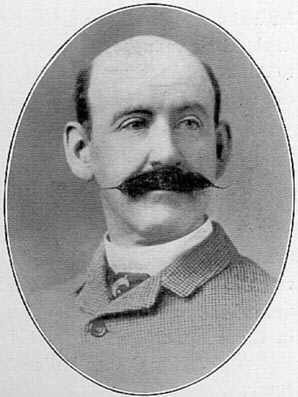On the Influence of the Black Death Upon the Roman Catholic Church

Scott Birdseye is a professor of History and
Assyriology at the University of West Dakota. He
and his lovely wife Trudy enjoy ornithology and
viewing moving picture shows. He currently
resides in the lovely state of Kansas, one of the
many of the United States.
The Black Death, which ravaged Europe in the mid-fourteenth century, produced a climate of social, political and economic instability, beginning the large scale disintegration of the Medieval system in Europe. Through the Black Death, the Roman Catholic Church, already rife with corruption and decreasing popularity amongst the masses, saw the basis of its economic stability removed, only increasing greed and dissolution as the Church fought bitterly to survive in the face of popular antagonism. Ironically, the Black Death brought not only weakness and instability to the Church, but also a strong, locally-based religious revival. The practitioners of this revitalized spiritual fervor distrusted the Papacy’s vast earthly power and saw the Church’s central power as dishonest and sinful. The quickly-spreading popular religious resurgence set forth the groundwork for the later Protestant Reformation, which led to the end of the Roman Catholic Church’s reign as one of Europe’s great political and economic powers.
The Black Death was a period of pandemic disease which spread through Europe in the latter half of the Fourteenth Century. Based in a bacterial infection and spread by rats, the Plague began in the East where it was introduced into Europe in the year 1346 at the Crimean grain port of Kaffa. Through merchants on the Black Sea trade routes, the disease spread to Constantinople and had reached Italy by 1348. Soon after the outbreak of infection, Guy de Chauliac, physician to the Pope in Avignon,
described two forms of the plague: bubonic and pneumonic. The bubonic plague, an infection of the body’s glands, was the least-deadly form of plague and cases of survival were known. The more deadly form of plague, pneumonic, an infection of the respiratory system, was highly infectious and could be both airborne and spread through other vectors, such as fleas. Although the traditional methods of treatment for leprosy illustrate that the Medieval world recognized the contagious nature of infectious diseases, European measures to limit the spread of the disease failed. By 1348 many Italian cities had established quarantines and in the following decades quarantines became common throughout all of Europe. While the quarantine system slowed the spread of the Plague across the Continent, it did little to halt the prevalence of disease within the towns themselves. While the pandemic eventually subsided, many of the sealed settlements had seen their entire populations erased.

The Black Death affected all of the people of Medieval society equally; nobles, peasants and clergy, both secular and regular, were all victims of the Plague. Within the Clergy, priests and monks of the lower rankings were least likely to survive the pandemic as they were more likely than higher Church authorities to interact with infected populations. Monks and nuns, who were in many cases the primary caregivers for rural areas, were especially vulnerable to the disease’s effects. While the numbers of the rank and file clergy declined, so did the Church’s revenues. With the quarantine system in effect throughout much of Europe, pilgrimages, one of the Church’s major sources of income, nearly ceased along with most other forms of trade and travel.
The Church, particularly the Papacy, had entered the Fourteenth Century in the midst of financial chaos. Pope Benedict XII, whose rule ended fifteen years before the beginning of the Black Death, had already been forced to run the Church on a quarter of the income that his predecessors had at their disposal. So desperate was the Church?’s financial situation that in 1378, Pope Gregory VII declared on his deathbed that the Church had no money and no future and would die with him.
A rise in superstition and distrust followed the Plague as it spread through Europe. Popular distrust of the Church grew, as death and disease caused many local churches to close. A diminishing number of priests were unable to perform much of the clerical services to which the people had been accustomed. People began to see that even the Church, God’s instrument on Earth, was incapable of vanquishing the Plague. The Plague was seen by many, especially in the Germanys, as sent by God as justified punishment for humanity’?s many sins. As the Black Death killed clergy as well as lay people, it was thought that the Church must also be rife with sin. The Plague removed the veil of holy sanctity surrounding the Church, opening many people’?s eyes to the corruption and greed which was prevalent in the Medieval Catholic Church.

The Black Death brought enormous population disruption. As the peasants died off, labor became scarce while available land became more common. Land values plummeted while labor costs soared. Land values in Europe were very slow to recover and as land was the basis of the Medieval economic system, many land owners lost all of their money. The Catholic Church, like many land owners in the Fourteenth Century, found itself nearly bankrupt. While the late Middle Ages saw many social advancements, the Catholic Church was, as an institution, unwilling to change with the society around it and the Papacy, isolated by its power, continued to operate with a strong Medieval mindset.
Economic disruption led many of the clerical and secular rulers of Europe to opportunistically vie for control of the Papacy, resulting in the Great Schism of 1378. Roman Pope Urban VI acted in a tyrannical manner to purge the Church of the influence of the Avignon Papacy and instituted enormous taxes in an attempt to re-establish the Church?s finances. By whatever means he could, Urban set out to retake the wealth which had been hoarded by the French Cardinals. The actions of Urban VI and the equally scandalous behavior of the Avignon Church did not escape the people?’s notice, increasing popular disaffection with the Church.

As the Church leaders scrambled for control and economic security by any means possible, doubt about the Church?’s place in society grew within the people of Europe. With their lives full of death, disease and widespread Church corruption, the people’?s traditional view of society became shattered. In the wake of the Black Death’s chaos, popular, locally-based religious revival grew throughout Europe, particularly in the Germanys, France and the British Isles. People began to push for reform in the lower levels of the Church, forcing the highest levels of the Church?’s hierarchy into further isolation, widening the gap between the ruling clerical elite, common people and their local priests. As the laiety began to focus more on the spiritual elements within life, the Papacy only increased its involvement in the realm of secular power and wealth.
The Black Death brought about a total restructuring of the European way of life. Cities and towns were erased and the foundations of the economic system collapsed. The Roman Catholic Church, which had entered the Fourteenth Century as the most powerful political entity in Europe was at the end of the century divided, unpopular and facing serious economic uncertainty. After the corruption and greed of the Church were brought into the light by the ravages of the Plague, the people of Europe distrusted Rome and Avignon and sought new answers to explain the perils of life. As the dissolution of the Medieval systems grew, furthered by the rise of the humanist Renaissance, the foundation was set for the Protestant Reformation.

